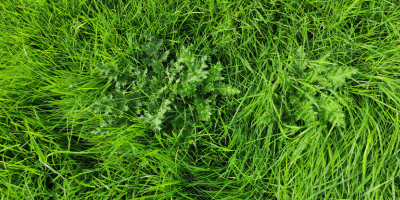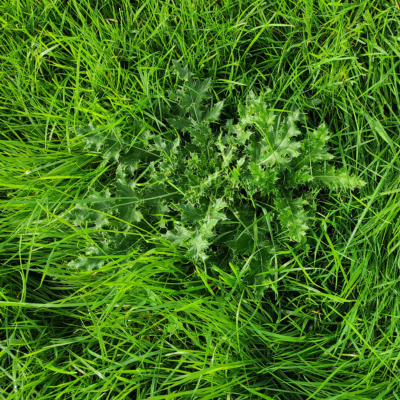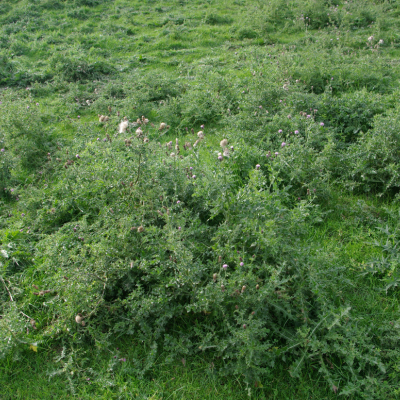Once established, the root mass can be greater than the plant above ground, competing effectively with the grass.
Creeping thistle

What is creeping thistle?
Creeping thistle (Cirsium arvense) is a perennial that grows from seed or from root sections in the soil. Once established, the root mass can be greater than the plant above ground, competing effectively with the grass. It spreads primarily by vegetative growth of roots. The root system can grow as much as 6m horizontally in one season, with most patches spreading at the rate of 1-2m/year.

Biology
Creeping thistles can produce up to 5,300 seeds per plant.
Seed can remain viable in the soil for 10-21 years.
Fragments of root can lay dormant for many years.
How can I identify creeping thistles?
Plants tend to grow in clusters. The stems are shiny, and the leaves are divided with spines at the end and the flower stalks have multiple small flowerheads.
Plants flower from June to October with lilac/pink flower heads.

Flowering stage

Rosette stage
Why are creeping thistles a problem?
Creeping thistle is classified as an injurious weed, so should not be allowed to spread or seed.
They compete with grass for space, light, nutrients, and water and they can facilitate the spread of orf in sheep and lambs. When grazing close to thistles, the spines can traumatise the skin allowing the orf virus to infect your livestock.
Thistles are unpalatable to stock therefore reducing the grazing area available.
Low infestations of just 1% can justify treatment.
How do I control creeping thistle?
Uprooting the plant will prevent the spread of seed, although some root fragments may remain and regrow.
Topping may be appropriate as a first step treatment to get different growth stages to the same stage ready for treatment with a translocated herbicide. Multiple toppings can multiply the number of plants present before they begin reducing. This requires repeat cutting over several years and vehicle movements will cause damage to the soil structure.
Control with a translocated herbicide at the rosette stage, up to 200mm across or high, when plants are young and actively growing.
Thistlex® is the best herbicide treatment when thistles are the primary target.
If other weeds are also present use Forefront® T, Pas®·Tor® Agronomy Pack or Grazon® Pro (for spot treatment).




Thistlex® is a very effective translocated product for the control of both creeping and spear thistle. It is very safe to grass.
Grazon® SPOT is a smaller more convenient 0.5 litre bottle (equivalent to eight 10 litre knapsack fills) is ideal for those treating smaller areas.
Forefront® T delivers the highest levels of control of docks, thistles, nettles, ragwort, buttercups and dandelions.
Pas·Tor Agronomy Pack delivers long-lasting perennial weed control and is excellent for docks, thistles and nettles.